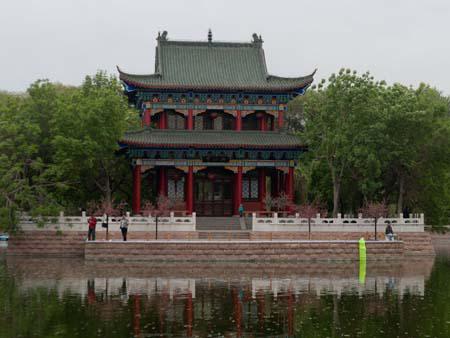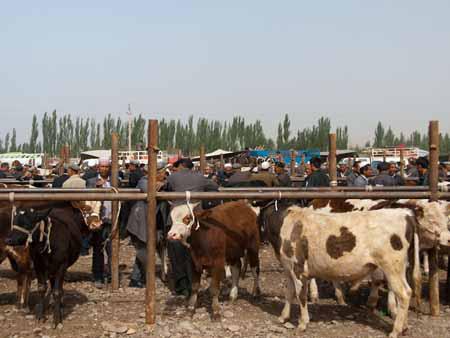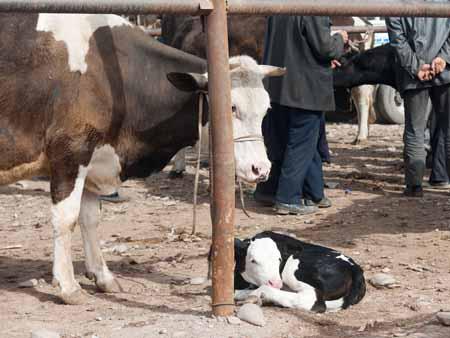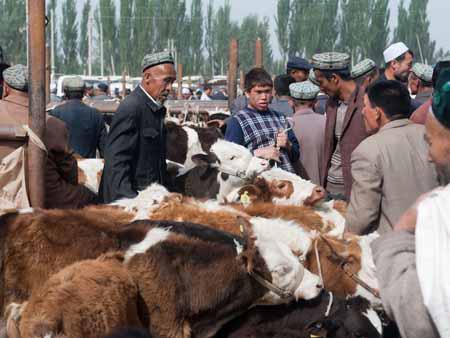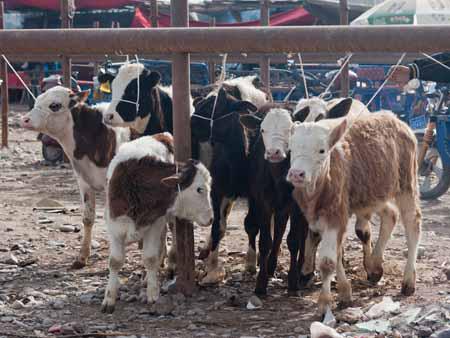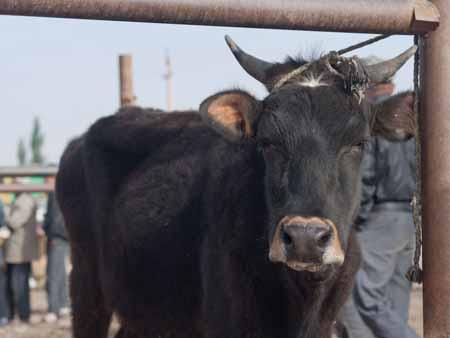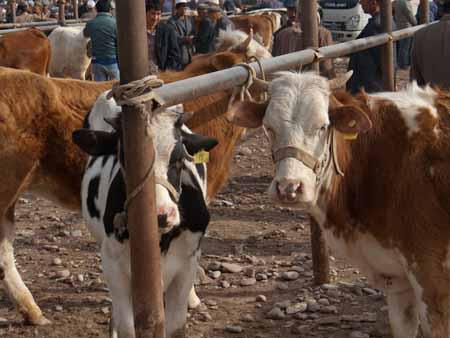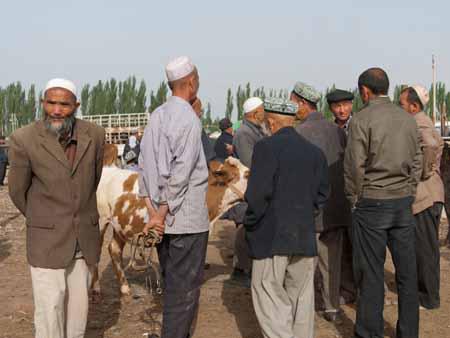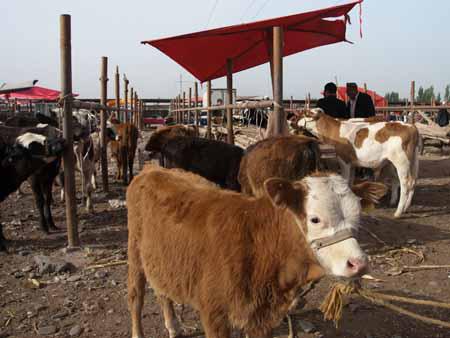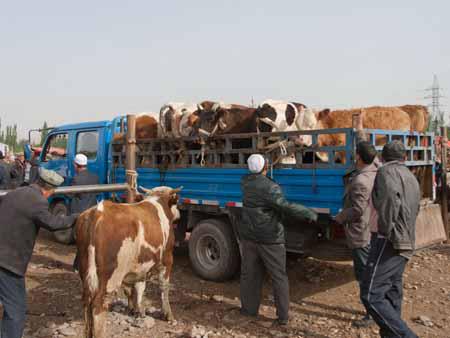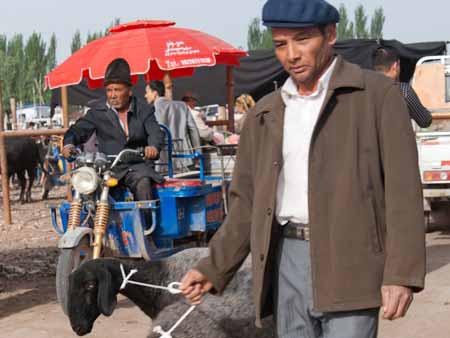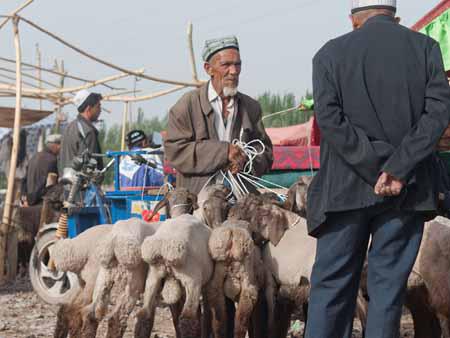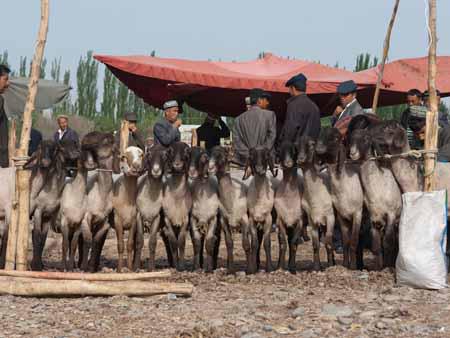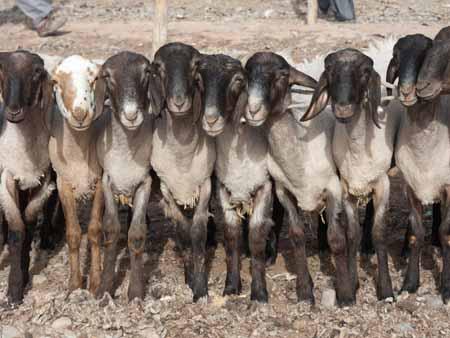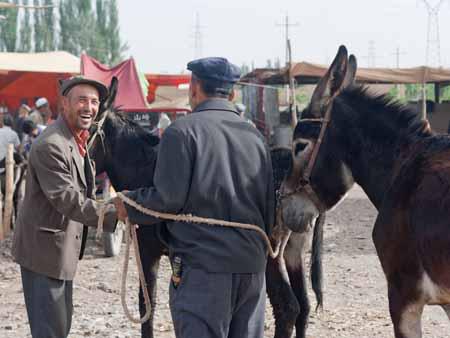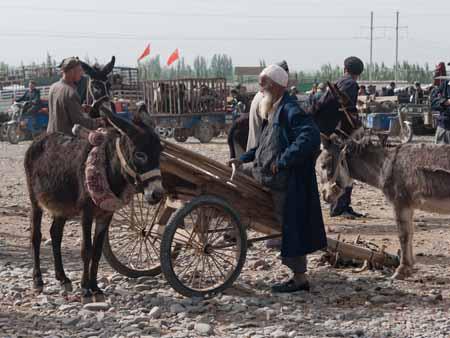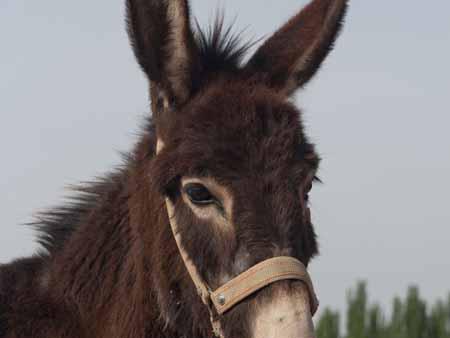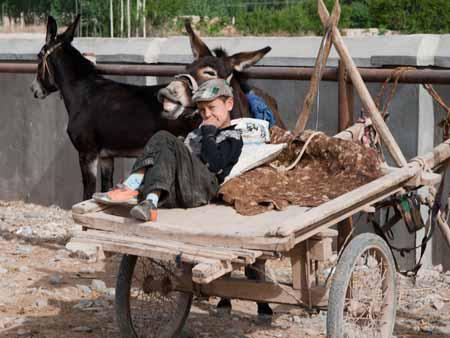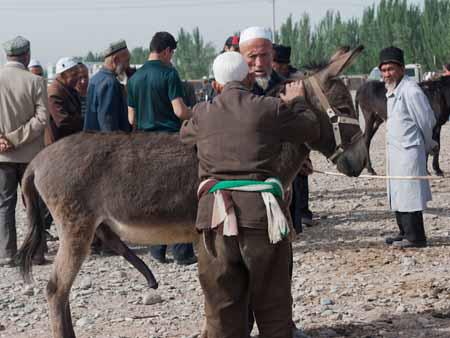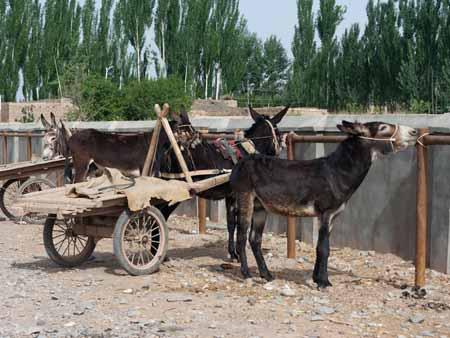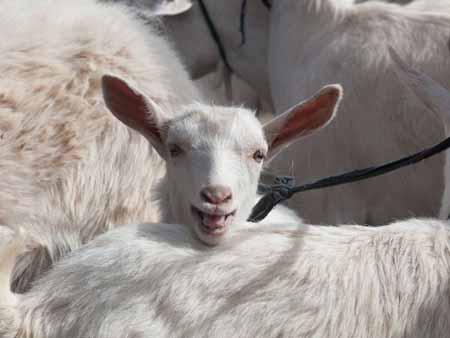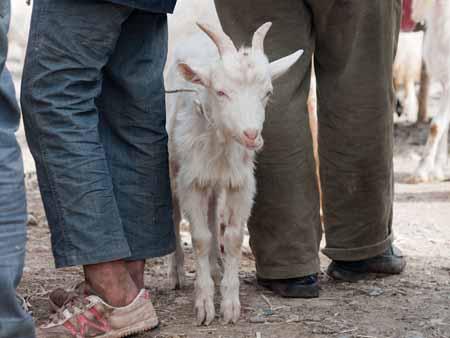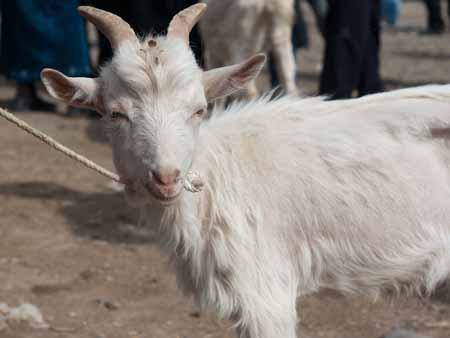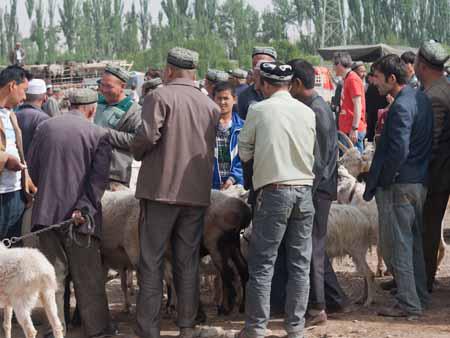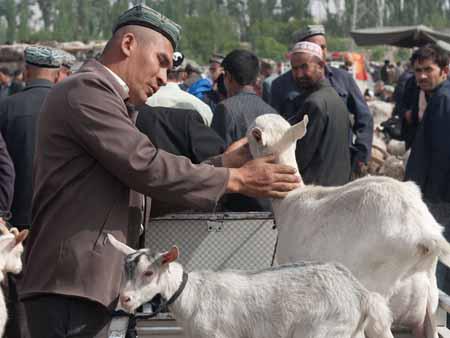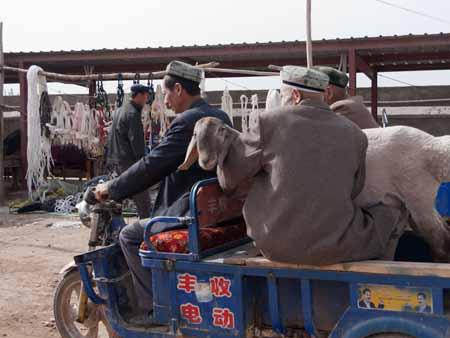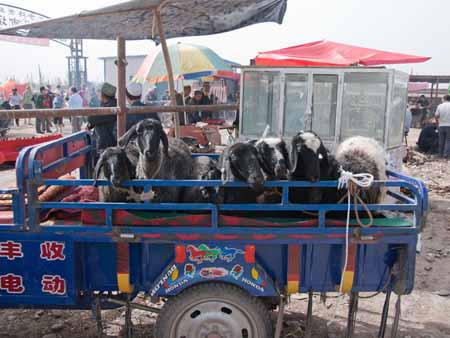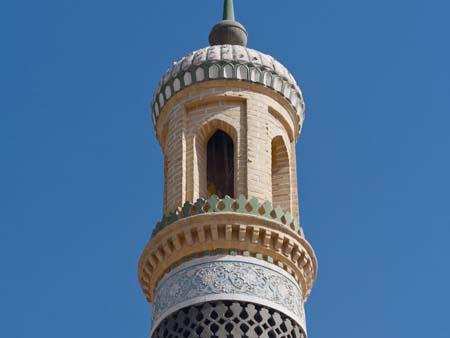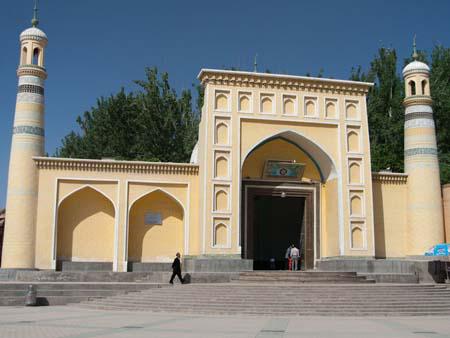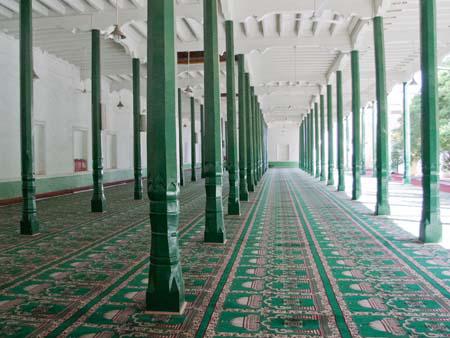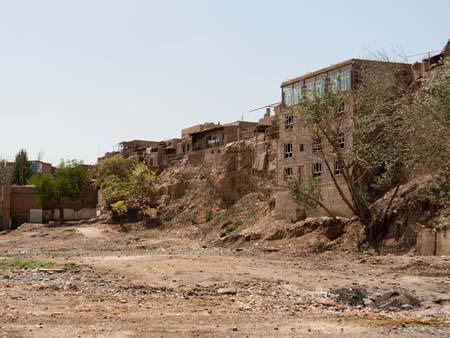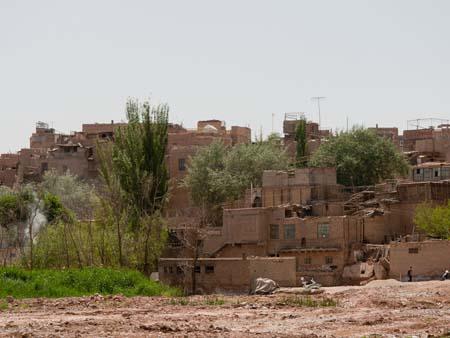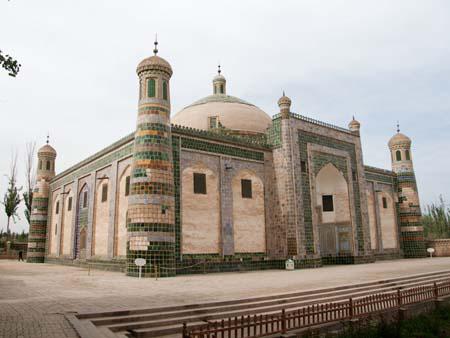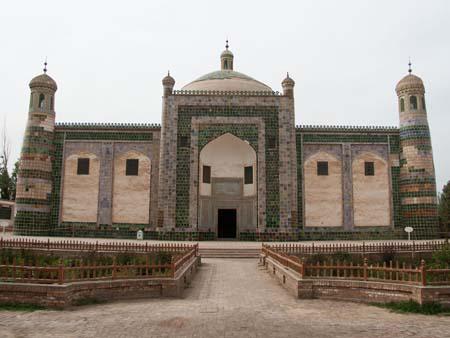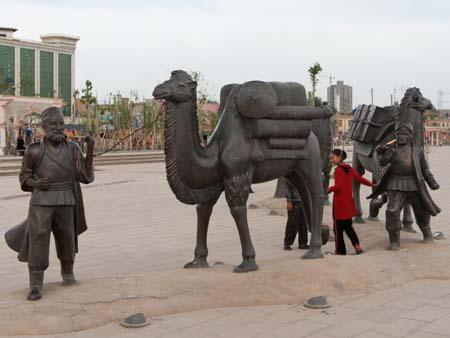One of the nice changes was the change in cuisine, Kashgar has a large number of Uyghurn people which influences the cuisine. Uyghurs are an ethnic minority group with the majority living in the south-western part of China. During our stay in Kashgar we ate Uyghurn food at traditional restaurant Intizar of Shou La Mian (noodles topped with meat and vegetables) and tohu gangpan (spicy chicken, potatoes and rice). To drink was green tea with a hint of nutmeg. As we walked down the street we found Tangaza (sticky rice wrapped in banana leaves and served with syrup) for a mere one Yuan each.
At the large Sunday market (which sold everything from Uyghur hats and knives to all the usual Chinese goods) we also found street food – plates of noodles for three Yuan, chuchura (steamed dumplings) and samsas (samousas) for two Yuan each, watermelon slices for one to two Yuan depending on size, and our favourite, freshly fried fish served with seasoning for five Yuan.
That night we headed to Kashgar’s night market for dinner, featuring street food of Uyghur cuisine, there was more than one dish being sold that made us a little queasy. This included stuffed intestines, trotters and tripe. We started with some tame chickpeas and capsicum and then a plate of noodles with a vinegar sauce. We then went for some cheap one Yuan skewers which we thought were chicken. However, after eating them we think they may have been goat’s bottom, which explained the ridiculously cheap price. After passing the halved goats heads a number of times, I decided to try one for eight Yuan. The cook observed me trying to work out what to do with this goats head on my plate, and kindly helped me crack the skull and remove the “good bits”. It was mostly all tendons with a bit of meat, I couldn’t bring myself to eat the lips which still had the jagged texture.
We finished the night with Uighur dessert named durap (yogurt, shaved ice and lemon juice all sloshed together), quite tasty.
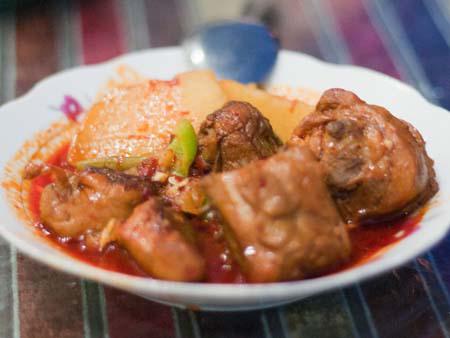
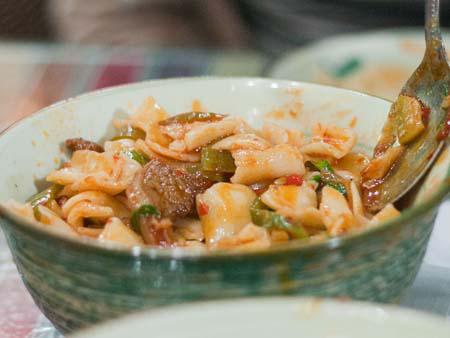
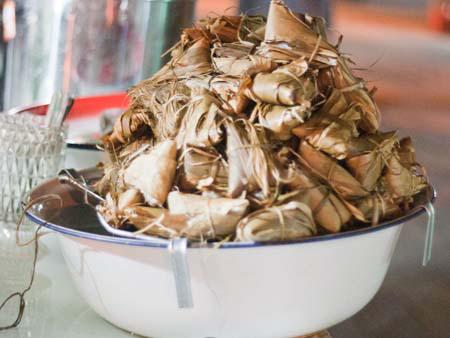
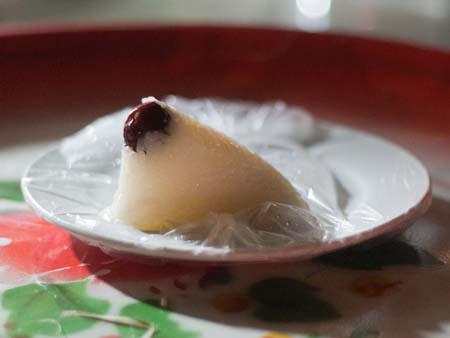
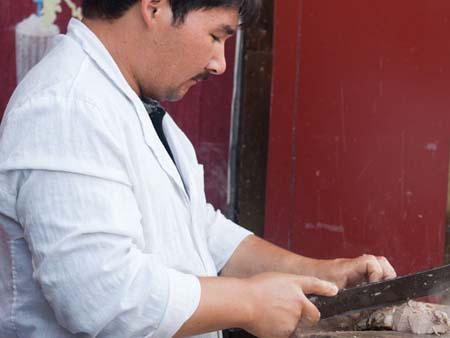
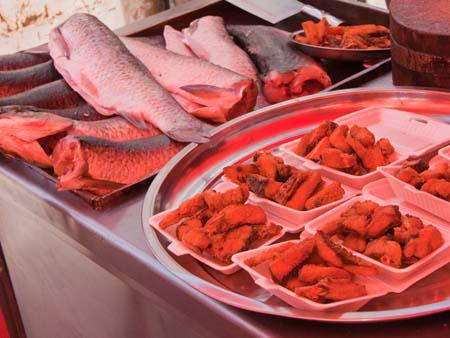
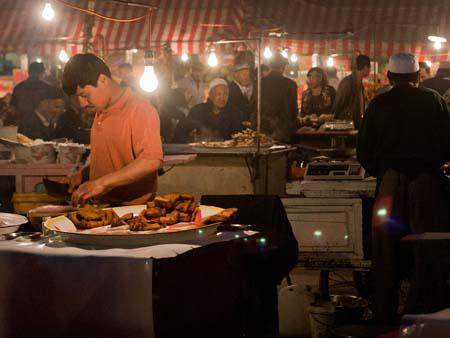
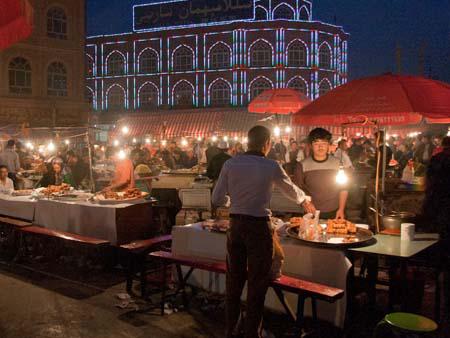
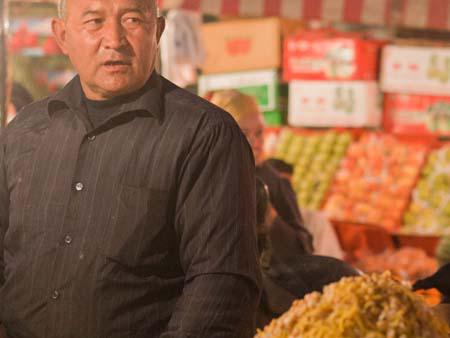
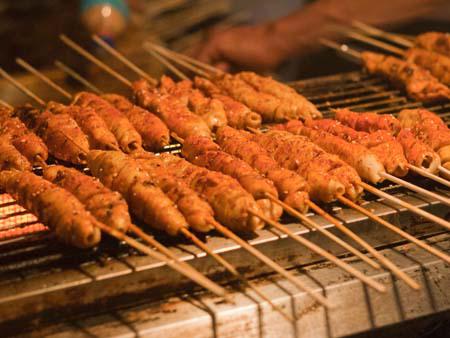
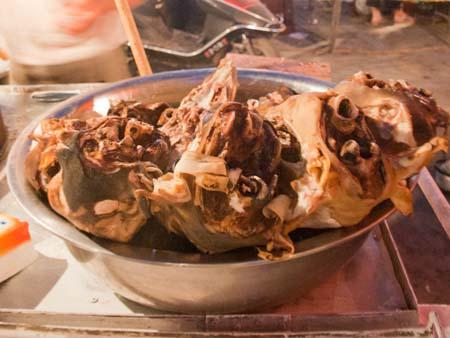
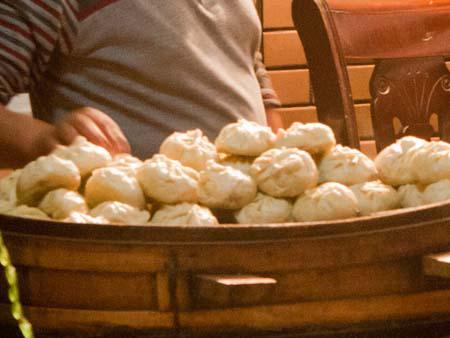
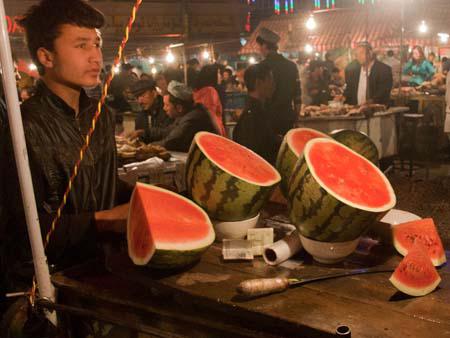
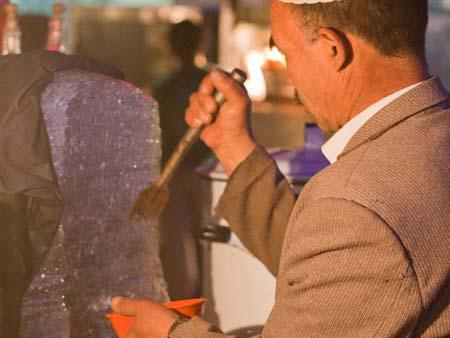
39.4704
75.98975500000006




































































































